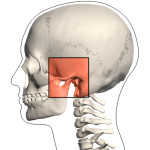
Migraine or TMJ?
One of the most frustrating things for many migraine sufferers is that they can end up taking a lot of medication that doesn’t work! And why? Because migraines are often symptoms of other conditions which the medication, obviously, isn’t designed to treat.
Resolving migraines can be a process of elimination –
- Is it a “true” migraine? (which means medication will probably help)
- A migraine caused by nerve inflammation?
- A migraine caused by head or neck injury?
- Or a migraine caused by something else like TMD / TMJ?
Temporomandibular Disorders (TMD) of the Temporomandibular Joint (TMJ).
The TM joint is the hinge which connects your bottom jaw to the rest of your skull, letting you move your jaw up, down and side to side so that you can talk, chew, yawn etc.
For a variety of reasons this joint can get tight and this leads to TMD.
Symptoms and signs:
- Grinding or clenching your teeth
- Pain and tenderness in your face and jaw
- Pain when you chew, speak or eat
- Jaw feeling “stuck” or “locked”
- Clicking or popping sound when you move your jaw
- Dizziness
- Earaches and tinnitus
- Migraines and headaches
What to do
First up, get a thorough, clinical and physical assessment. Make sure that this is, actually, an issue for you and a possible cause of your migraine. Once we identify the true problem it is often surprisingly easy to fix. Then we can reduce your migraine frequency, intensity and medication.
A dentist can help relieve the teeth grinding stress and some short term modifications to diet can help as well while the muscles readjust, no chewing gum and less chewy foods.
Physiotherapy to relieve the muscles stress and tension, help the neck and shoulder muscles to relax and stop compensation patterns. And, if the joint is damaged, Magnetic Resonance Therapy (MRT) to help regenerate the joint and remove the pain.


2 Comments